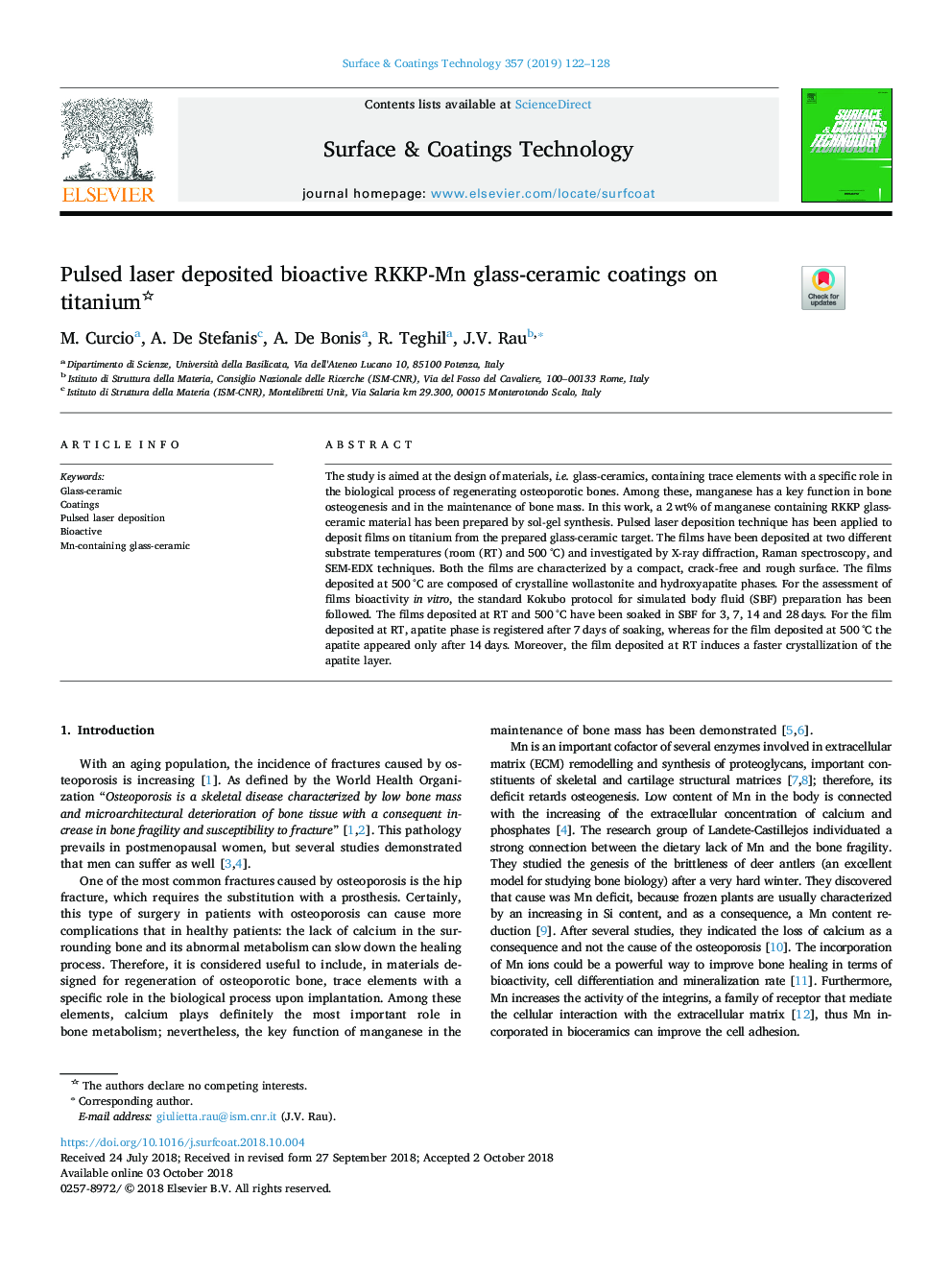| Article ID | Journal | Published Year | Pages | File Type |
|---|---|---|---|---|
| 11008879 | Surface and Coatings Technology | 2019 | 7 Pages |
Abstract
The study is aimed at the design of materials, i.e. glass-ceramics, containing trace elements with a specific role in the biological process of regenerating osteoporotic bones. Among these, manganese has a key function in bone osteogenesis and in the maintenance of bone mass. In this work, a 2â¯wt% of manganese containing RKKP glass-ceramic material has been prepared by sol-gel synthesis. Pulsed laser deposition technique has been applied to deposit films on titanium from the prepared glass-ceramic target. The films have been deposited at two different substrate temperatures (room (RT) and 500â¯Â°C) and investigated by X-ray diffraction, Raman spectroscopy, and SEM-EDX techniques. Both the films are characterized by a compact, crack-free and rough surface. The films deposited at 500â¯Â°C are composed of crystalline wollastonite and hydroxyapatite phases. For the assessment of films bioactivity in vitro, the standard Kokubo protocol for simulated body fluid (SBF) preparation has been followed. The films deposited at RT and 500â¯Â°C have been soaked in SBF for 3, 7, 14 and 28â¯days. For the film deposited at RT, apatite phase is registered after 7â¯days of soaking, whereas for the film deposited at 500â¯Â°C the apatite appeared only after 14â¯days. Moreover, the film deposited at RT induces a faster crystallization of the apatite layer.
Related Topics
Physical Sciences and Engineering
Materials Science
Nanotechnology
Authors
M. Curcio, A. De Stefanis, A. De Bonis, R. Teghil, J.V. Rau,
